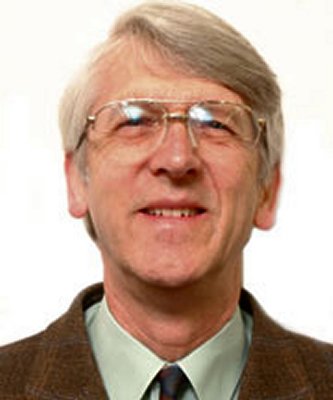Cambridge 7th to 9th September

Presenting Author:
John Parker
<j.m.parker@sheffield.ac.uk >
article posted 10 Feb 2015
John Parker moved to Sheffield from the University of Cambridge in 1971, having completed a first class MA in Natural Sciences, a PhD and a post-doctoral NERC fellowship studying aluminosilicates with incommensurate structures. At Sheffield he has developed interests in both the optical/structural properties of glasses and the technology of bulk glass making, supported by links with local glass manufacturers.
Now Emeritus Professor of Glass Technology, John is actively involved in the International Commission on Glass, and is past-president of both the Society of Glass Technology and the European Society of Glass Science and Technology.
His particular research interests have recently fallen in the area of optical properties of glass, particularly the way dopant ions interact with light. This has led him into areas ranging from fibre optics to glass colour, history and art.
As Curator, John is responsible for the collection of Glass Artefacts held in the Turner Museum at the University of Sheffield. These are mostly works collected during the first half of the 20th Century but there are both newer and older items of significance too.

Mirror, Mirror on the Wall ...
John Parker
University of Sheffield
Department of Materials Science and Engineering,
Sir Robert Hadfield Building, Mappin Street, Sheffield, S1 3JD
 In spite of the title, this talk will not reach any conclusions on which mirrors are the fairest of all.
One aim though will be to review of the history of mirror-making from ancient to modern times
and this will include an analysis of the many historical uses of mirrors, probably with a few stories
that are the stuff of legend.
In spite of the title, this talk will not reach any conclusions on which mirrors are the fairest of all.
One aim though will be to review of the history of mirror-making from ancient to modern times
and this will include an analysis of the many historical uses of mirrors, probably with a few stories
that are the stuff of legend.
 As part of the presentation, the factors which govern reflectivity - its
wavelength and angular dependence for both metallic and non-metallic reflecting surfaces - will
be considered together with the way such effects underpin a number of specific applications for
mirrors.
As part of the presentation, the factors which govern reflectivity - its
wavelength and angular dependence for both metallic and non-metallic reflecting surfaces - will
be considered together with the way such effects underpin a number of specific applications for
mirrors.
Interference mirrors are the latest target of R & D and we will examine how they are made with examples of their application.
 Finally we will see what effect the thickness of the
reflecting films has and consider the nature of iridescent reflecting layers.
Finally we will see what effect the thickness of the
reflecting films has and consider the nature of iridescent reflecting layers.
